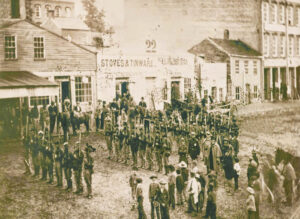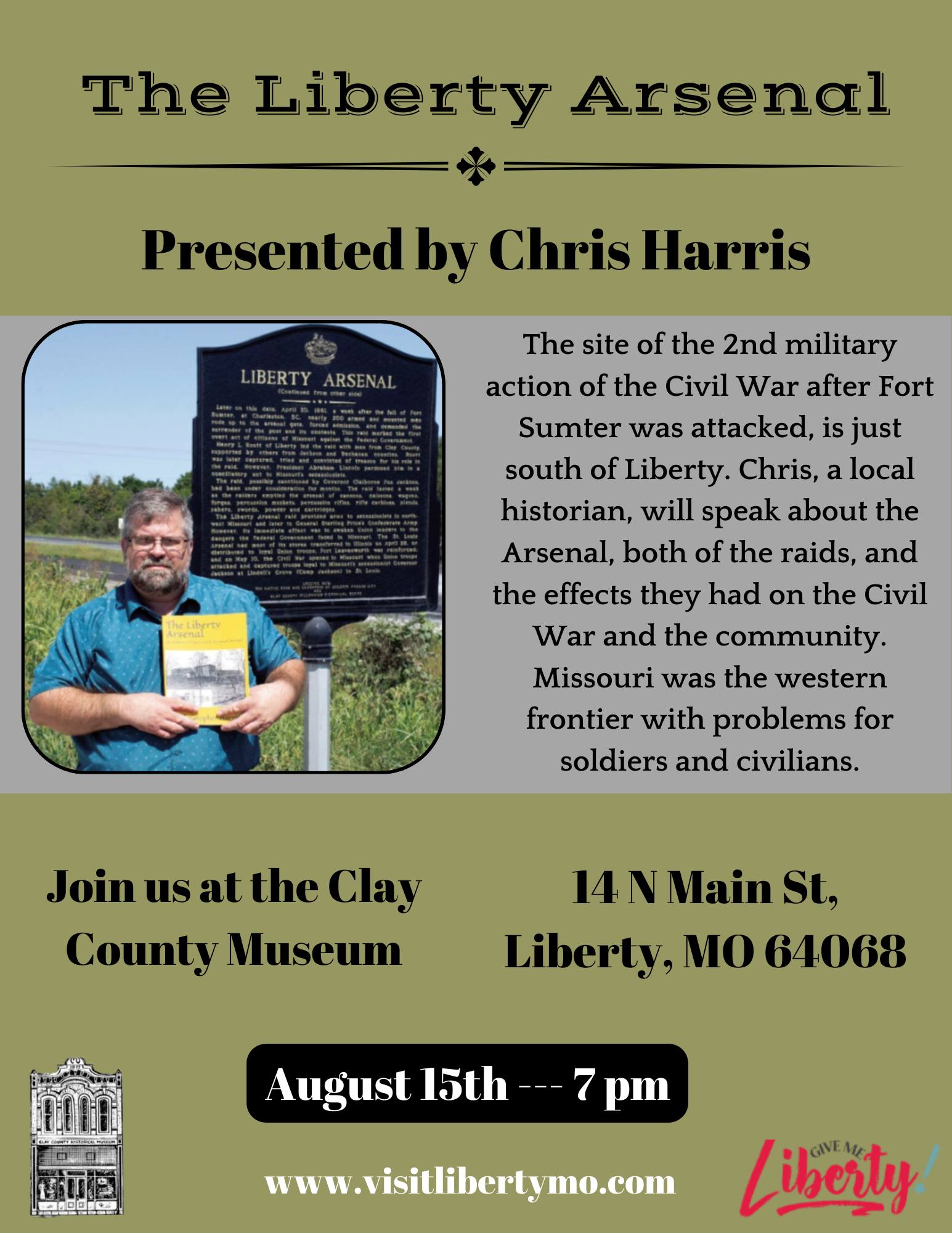
Liberty’s Silent Echoes: The Missouri Arsenal That Fueled a Nation’s Divide
In the tranquil, tree-lined streets of Liberty, Missouri, a sense of quiet history pervades the air. Modern storefronts and bustling community centers hum with the rhythms of contemporary life, yet beneath the surface, the soil holds stories of a time when this pastoral setting was a flashpoint in a nation tearing itself apart. Here, amidst the gentle hills of Clay County, once stood the Liberty Arsenal – a seemingly minor federal outpost whose capture in the spring of 1861 sent a clear, chilling signal across the divided state and helped ignite the powder keg of the American Civil War in the West.
To understand the profound significance of the Liberty Arsenal, one must first grasp Missouri’s unique, agonizing position on the eve of the Civil War. A border state, Missouri was a microcosm of the national struggle, a place where families were split, neighbors turned against neighbors, and the lines between loyalty and rebellion were often blurred by economic ties, kinship, and deeply held, divergent beliefs. While its southern counties leaned towards the Confederacy due to slaveholding traditions, its central and northern regions, particularly along the Missouri River, had a strong mix of Unionist sentiment and a significant German immigrant population that staunchly opposed slavery. This delicate balance made Missouri a battleground even before the first shots were fired at Fort Sumter.
The Liberty Arsenal itself was a relatively new federal installation, completed in 1859. Its strategic placement was a testament to the evolving needs of the young American republic. Built on a bluff overlooking the Missouri River, it was intended to serve as a storage and distribution point for arms and munitions for the frontier – a logistical hub for the ongoing westward expansion, for dealing with Native American tribes, and for equipping local militias. Its brick structures, though modest compared to grander Eastern arsenals, contained a vital stock of weapons: muskets, rifles, sabers, and, crucially, a significant supply of gunpowder. For a state poised on the brink of war, control of such an armory was paramount.

As the political temperature rose throughout 1860 and into early 1861, Missouri became a crucible of secessionist fervor and Unionist resolve. Governor Claiborne Fox Jackson, a staunch Southern sympathizer, actively worked to align the state with the Confederacy, often clashing with the more moderate or pro-Union elements within the state legislature and the federal government. The air was thick with rumors, plots, and counter-plots. Every federal installation became a target, every weapon a prize.
It was against this backdrop of escalating tension that the events of April 1861 unfolded. Just days after the bombardment of Fort Sumter in South Carolina, the spark of war officially ignited. The news reverberated across the nation, galvanizing both sides. In Missouri, Governor Jackson quickly moved to seize federal property, believing that a show of force would sway the state towards the Confederacy. His sights were set on the U.S. Arsenal in St. Louis, a much larger prize. However, Unionist forces, led by Captain Nathaniel Lyon, were quicker and stronger, securing St. Louis and thwarting Jackson’s immediate plans.
Thwarted in St. Louis, pro-Confederate forces turned their attention to the smaller, less defended federal installations. The Liberty Arsenal became an obvious target. Located in Clay County, a region with strong Southern sympathies, the arsenal was guarded by only a handful of federal soldiers. The temptation was too great to resist.
On April 20, 1861, a contingent of pro-Confederate militia, estimated to be between 100 and 300 men, converged on the Liberty Arsenal. These were not seasoned soldiers, but local men – farmers, merchants, and landowners – inflamed by secessionist rhetoric and eager to arm themselves for what they believed was a righteous cause. Among them were elements of the "Clay County Minute Men" and other local companies. The exact details of the confrontation vary slightly in historical accounts, but the outcome was decisive and relatively bloodless.
The federal commander, Captain Archibald Gamble, recognizing the overwhelming numerical superiority of the attackers and the futility of resistance, surrendered the arsenal without a fight. One account from the Liberty Tribune newspaper published shortly after the event described the scene: "The Federal Government’s Arsenal in Liberty was taken possession of by an armed force of citizens of Clay and Ray counties… about 1,000 stand of arms, muskets, rifles, sabers, and a large quantity of powder and other munitions of war were seized."
The "sacking" of the Liberty Arsenal was a moment of profound symbolic and practical significance. For the secessionists, it was a triumph, a clear demonstration of their ability to defy federal authority and arm their burgeoning militias. The approximately 1,000 muskets, 300 sabers, and substantial quantities of gunpowder provided an immediate and crucial boost to the Confederate cause in Missouri. These weapons would soon be in the hands of men who would fight in the early, bloody battles of the state, such as Wilson’s Creek and Lexington.
For the Union, the loss of Liberty Arsenal was a galling blow, further evidence of the precariousness of federal control in Missouri. It underscored the immediate and dire need for a robust Unionist response to prevent the state from fully aligning with the Confederacy. The event became a rallying cry for both sides, a tangible symbol of the war’s arrival in the heartland.
The capture of the Liberty Arsenal also highlighted the deep divisions within the state’s populace. Many of the men who seized the arsenal were neighbors and acquaintances of those who would soon take up arms for the Union. It was a local conflict writ large, a prelude to the brutal guerrilla warfare that would plague Missouri throughout the war, giving rise to infamous figures like William Quantrill and the James-Younger Gang, whose early exploits were often rooted in the chaos of the border state conflict.

Following its capture, the Liberty Arsenal’s fate was sealed. The federal government, once it re-established a firmer grip on parts of Missouri, deemed the arsenal too vulnerable to be held securely and too valuable to fall into Confederate hands again. Union forces, under the command of Major Emory S. Foster, subsequently destroyed or dismantled much of the remaining structures and removed any lingering military supplies. By 1862, the arsenal was largely abandoned, its brief but impactful life as a federal armory over. The strategic importance of such small, isolated outposts diminished as the war evolved into larger-scale conventional engagements.
Today, little remains of the physical arsenal itself. The land it once occupied has largely reverted to private ownership, blending back into the landscape as if its fiery past was merely a dream. However, the memory of the Liberty Arsenal endures, preserved in historical markers, local museums, and the collective consciousness of the community. A plaque near the original site commemorates the event, serving as a silent sentinel to a bygone era.
Local historians and preservationists continue to ensure that the story of the Liberty Arsenal is not forgotten. The Clay County Museum and Historical Society, for instance, houses artifacts and documents related to the period, helping to paint a vivid picture of what life was like in Liberty during those tumultuous years. These efforts are crucial, for the Liberty Arsenal’s story is more than just an account of a military raid; it is a profound lesson in the fragility of peace, the complexities of loyalty, and the devastating consequences of national division.
The capture of the Liberty Arsenal serves as a powerful reminder that the Civil War was not just fought on grand battlefields like Gettysburg or Vicksburg. It was fought in countless towns and villages, in the hearts and minds of ordinary citizens, and over seemingly small, yet strategically vital, pieces of infrastructure. The arsenal’s story is a microcosm of the larger conflict, illustrating how localized actions, driven by fervent beliefs and the desire for control, could ripple outwards and contribute to the immense human cost of the war.
As visitors walk through present-day Liberty, they may not immediately see the scars of war. Yet, the echoes of that April day in 1861 linger – a testament to the fact that history, even when physically erased, continues to shape the identity and memory of a place. The Liberty Arsenal, though long gone, stands as a silent monument to the moment a nation’s divide became a local reality, igniting a spark that helped consume a continent in flames. It is a story that reminds us of the profound responsibility that comes with liberty, and the immense price paid when it is fractured by division.


